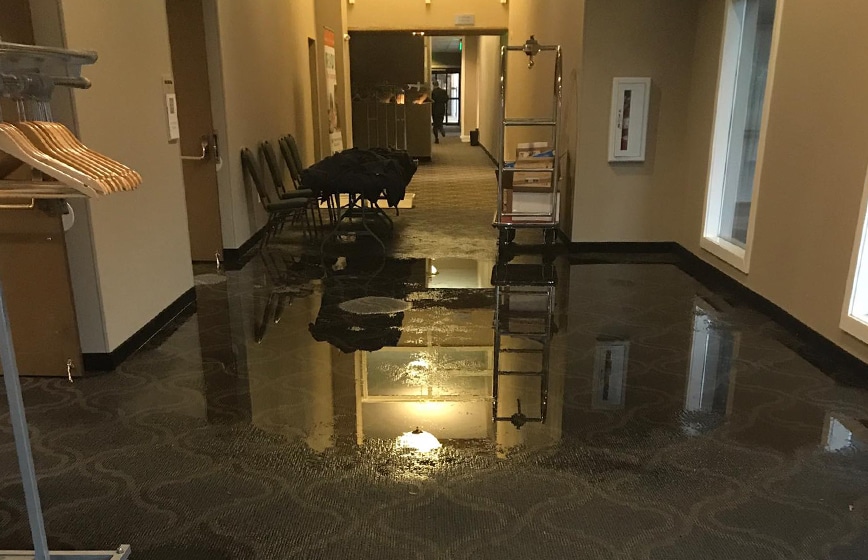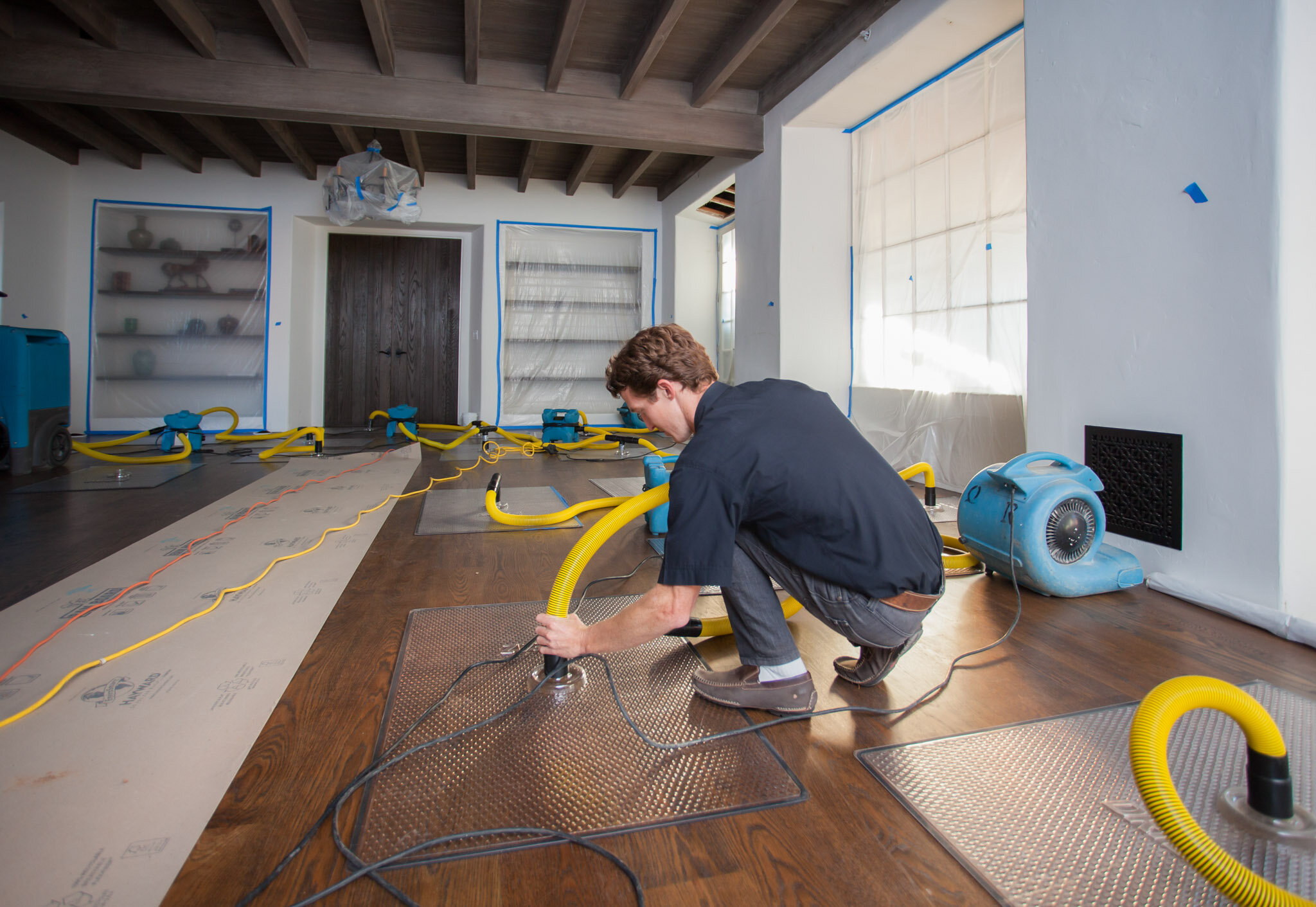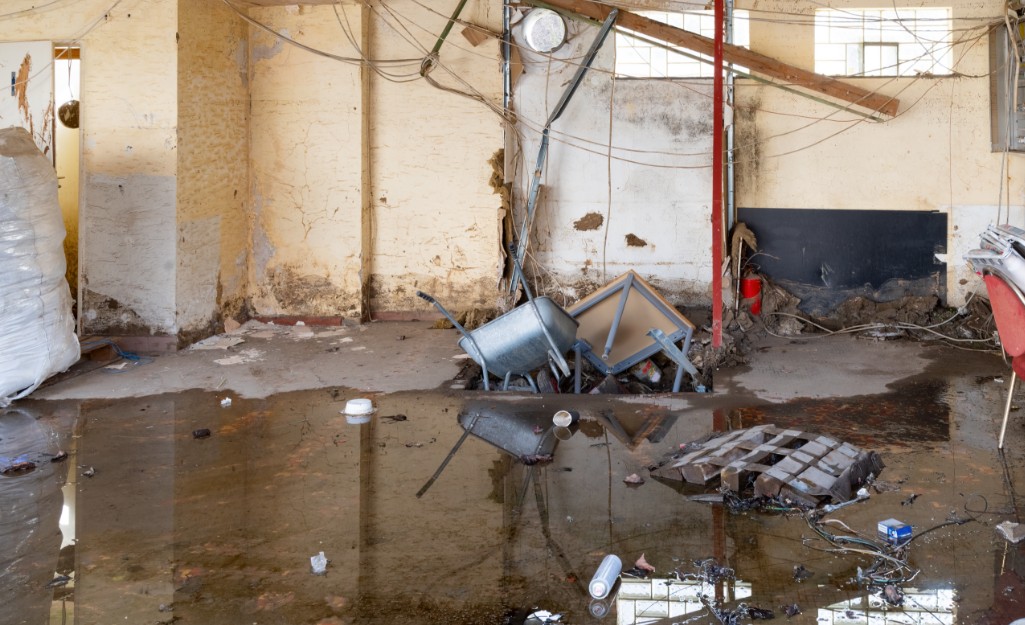Water Damage Restoration 101: Understanding the Process and Expense
Water damage can strike suddenly, leaving home owners in a state of complication. Understanding the restoration procedure is important for reliable recovery. From assessing the damage to choosing the ideal company, each step influences the total outcome and price. Factors such as the kind of water damage and urgency additionally play a significant duty. What are the certain strategies used in reconstruction, and exactly how can one plan for possible expenses?
Types of Water Damage
Water damage can develop from numerous sources, each providing distinct obstacles for restoration. The three key kinds of water damage are classified based on contamination degrees: clean water, gray water, and black water. Tidy water stems from sources like busted pipes or rainwater, posturing minimal wellness dangers. Gray water, which includes wastewater from sinks or washing makers, consists of pollutants that might cause discomfort or health problem if ingested. Black water, the most hazardous group, originates from sewer or floodwaters, consisting of damaging microorganisms and microorganisms. Each kind requires details repair techniques and precaution to efficiently mitigate and attend to the damage health and wellness threats. Comprehending these distinctions is necessary for property owners and experts associated with the water damage reconstruction process.
Initial Analysis and Examination
A detailed first assessment and assessment are important actions in the water damage reconstruction procedure. This stage starts with an expert evaluating the level of the damage, recognizing the source of the water breach, and identifying the sort of water involved - Water Damage Restoration. Specialists use specific devices to measure dampness levels in various products, such as walls, floorings, and furnishings. In addition, they evaluate structural stability and possible carcinogen, consisting of mold and mildew development. The searchings for from this evaluation educate the remediation strategy, guiding needed actions and source appropriation. Precise documents of the damage is crucial for insurance policy cases and future referral. On the whole, this initial analysis lays the groundwork for efficient repair, guaranteeing a detailed action to the specific circumstance handy

Water Removal Methods
Adhering to the first assessment, effective water extraction methods are utilized to alleviate damage and stop additional problems. These methods entail making use of specialized devices such as submersible pumps and industrial-grade vacuums. The selection of technique depends on the quantity of water present and the type of products affected. For standing water, completely submersible pumps are normally utilized for rapid elimination, while vacuum cleaners are suitable for removing water from rugs and furniture. In addition, advanced approaches like water removal floor coverings might be employed for hard-to-reach locations. The objective is to get rid of as much water as possible, lessening the possibility for mold and mildew development and architectural damage. Motivate and effective water removal is vital in the general water damage restoration process.
Drying Out and Dehumidification Process
As soon as the water extraction is full, the drying out and dehumidification process ends up being critical to recovering the afflicted area. This stage usually utilizes industrial-grade dehumidifiers and air movers to efficiently lower wetness degrees. The dehumidifiers reel in damp air, eliminating excess humidity, while air moving companies circulate air to speed up dissipation. Surveillance tools is frequently made use of to track humidity and temperature level degrees, guaranteeing suitable drying out problems. The period of this process can differ depending upon the level of the water damage and ecological factors. It is important to extensively dry all affected materials, consisting of walls, flooring, and furnishings, to stop mold and mildew growth and architectural damage. Appropriate execution of this action is crucial for a successful remediation end result.
Cleansing and Sterilizing Affected Areas

First Analysis and Inspection
Before starting any type of restoration initiatives, an extensive preliminary assessment and assessment of the influenced locations are essential for effective cleansing and sterilizing. This procedure entails identifying the extent of water damage, figuring out the source of the water intrusion, and assessing the products impacted. Inspectors typically seek signs of mold and mildew development, architectural honesty concerns, and damaged belongings. The evaluation also consists of inspecting dampness levels using specific tools to assure no covert water pockets stay, as these can cause more difficulties. Recording the findings is necessary for preparing the following steps in the repair process. An in-depth preliminary evaluation makes it possible for repair experts to create a targeted technique for effective cleaning and disinfecting, ultimately reducing damage and health and wellness threats.
Cleansing Strategies and Products
Reliable cleaning and sterilizing of water-damaged locations call for a range of techniques and products tailored to the specific materials impacted. For permeable surface areas like drywall and carpets, extraction techniques are vital to remove excess dampness, complied with by deep cleaning with specialized cleaning agents. Non-porous materials such as floor tile or metal can be cleaned up making use of commercial-grade cleansers that effectively get rid of impurities. Steam cleansing is an additional efficient method, specifically for carpetings and upholstery, as it utilizes high temperatures to get rid of germs and mold. Additionally, environmentally friendly products are significantly preferred for their safety and efficacy. Inevitably, selecting the proper cleansing approaches and items not just assures instant tidiness yet likewise help in protecting against more damage and wellness dangers associated with water breach.
Sanitization and Disinfection Techniques
When resolving water damage, appropriate sanitization and disinfection techniques are vital to ensure the safety and security and health and wellness of the damaged setting. After initial cleaning, surface areas must be treated with suitable disinfectants to get rid of microorganisms, mold and mildew, and bacteria that flourish in moist conditions. Typical methods consist of using EPA-approved chemical disinfectants, which can be applied with spraying or wiping techniques. Furthermore, ultraviolet (UV) light systems can properly sanitize areas by neutralizing bacteria without severe chemicals. The option of technique typically depends upon the kind of materials impacted and the extent of contamination. Eventually, comprehensive sanitization not only brings back a safe living room however additionally aids protect against future health dangers connected with lingering moisture and mold and mildew development.

Repair Services and Restoration Options

Factors Affecting Restoration Prices
The degree of water damage straight influences the restoration costs homeowners can expect to incur. Elements such as the resource of the water, the duration of direct exposure, and the affected products considerably affect prices. Tidy water damage from a busted pipe is typically much less pricey to restore compared to damage triggered by sewer (Flood Cleanup Services). In addition, the degree of contamination dictates the need for specialized cleansing and disposal solutions, further boosting costs. Geographical area likewise plays a duty, as local labor rates and schedule of reconstruction solutions can differ. Finally, the urgency of the reaction affects expenses; quicker treatments typically cause reduce total expenditures by avoiding more damage. Understanding these variables is crucial for home owners when estimating repair expenses
The 3 key types of water damage are classified based on contamination degrees: tidy water, gray water, and black water. A comprehensive preliminary assessment and inspection are essential steps in the water damage restoration process. For standing water, submersible pumps are generally used for fast elimination, while vacuum cleaners are suitable for removing water from rugs and furniture. The degree of water damage straight influences the reconstruction sets you back home owners can expect to incur. Clean water damage from a busted pipeline is normally much less expensive to recover compared to damage caused by sewer.